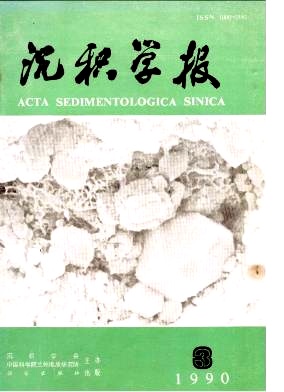FLUID POTENTIAL AND GAS MIGRATION OF DONGPU DEPRESSION
- Received Date: 1989-01-08
- Publish Date: 1990-09-10
Abstract: Dongpu depression is one of the famous gas-producing areas of China. The principal strata of gas-source rock and reservoir rock is Shahejie formation. To study the potential of formational fluid of this stratum is the main content in this paper. The fluid potential is the mechanical energy possessed by unit mass of fluid,which is composed of two parts, gravity and pressure. The formational fluide always move from higher potential area to the lower, so the area of lower hydrocarbon potential is the direction of secondary migration and the location of accumulation of oil and gas. The characters of ground water pressure system determined the water moving direction and the location of accumulation of oil and gas. According to A. A. Karzaiv,the natural pressure water system is divided into two types: Sedimentary pressure water system and eluvial pressure water system. The former's water moving direction is often centrafugal,while the later's water moving direction is centripetal. The equipotential surfaces of the centripetal flow tilt downward will be favourable to trap oil and gas. The ground water of oil and gas-producing strata in Dongpu depression characterises the centrifudal. The over high pressure in the study area is evident in the deep part, i.e., the formational pressure coefficients in the tectonic lower is evidently larger than that in the tectonic higher, and the fluid potential of the former is larger than that of the later. Therefore,the calculation of fluid potential in Dongpu depression shows that not only in the shallow but also in the deep reservoir rocks,the moving direction of water is towards the tectonic high location,and the gas potential or oil potential are also decreases towards the tectonic high. This character causes the horizontal projects of equipotential surface contours of water,oil and gas are nearly coincide. Because the physical properties of reservoir rock in shallow depth are more homogeneous,and the transportation ability of hydrodynamic is better,so the oil and gas accumulation in Dongpu depression is located at the relative low oil and gas potential area. Generaly,the accumulation of natural gas of deep strata is still controlled by low gas potential. However.the high production wells are always related to the local high potential area such as well Bai 9 but surrounded by the low potential. How can we explain this phenomenon,which appears not coincide with the general hydrodynamic principle of oil and gas migration. The writers suggest it is the effect of less permeable zones. Because of the much smaller weight density of gas than that of oil, former's floating force is much larger than that of later. Gas migration paths are more nearly vertical than oil's under dynamic condition,and hence the slope of gas and water contact surface is smaller than that of oil and water contact surface. If there are open faults at the top of anticline as the Baimiao structure.updip flow direction is detrimental to entrapment oil than to gas,oil is easy to overflow along the faults. This can explain why Baimiao structure mainly produces gas with little oil. Similarly, it can also be used to explain why the S_3~(3+4) strata of Qiaodong block produces gas, not oil.
| Citation: | Hua Baoqin, WuShizhong. FLUID POTENTIAL AND GAS MIGRATION OF DONGPU DEPRESSION[J]. Acta Sedimentologica Sinica, 1990, 8(3): 46-57. |






 DownLoad:
DownLoad: